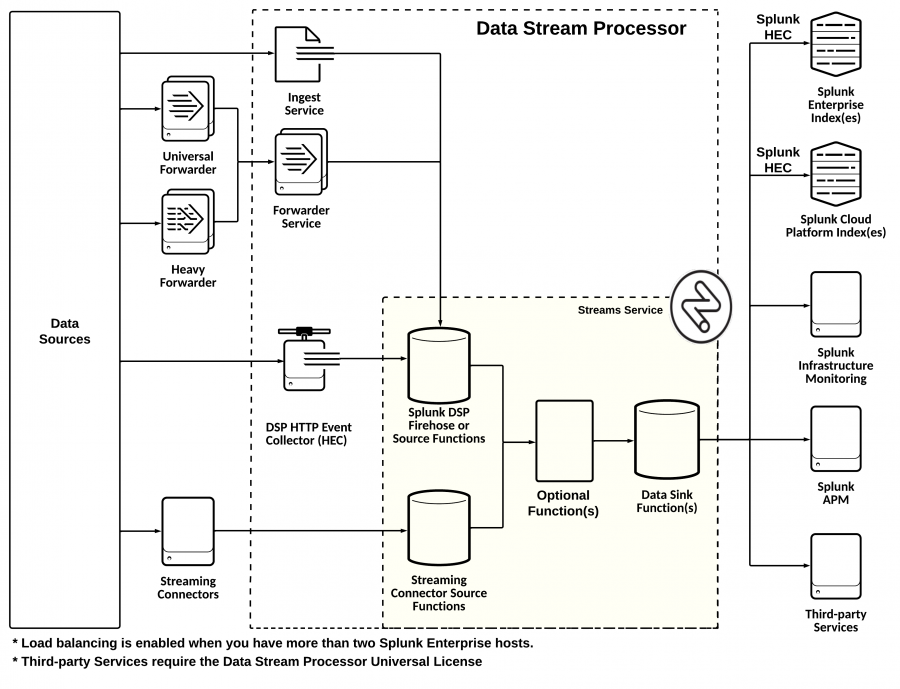All DSP releases prior to DSP 1.4.0 use Gravity, a Kubernetes orchestrator, which has been announced end-of-life. We have replaced Gravity with an alternative component in DSP 1.4.0. Therefore, we will no longer provide support for versions of DSP prior to DSP 1.4.0 after July 1, 2023. We advise all of our customers to upgrade to DSP 1.4.0 in order to continue to receive full product support from Splunk.
Data collection methods
Depending on the specific type of data source that you are working with, the uses one of the following services or connector types to collect data from it:
Collect connectors (also known as pull-based connectors) are no longer supported as of version 1.4.0. See Deprecated and removed features for more information.
| Data collection method | Description |
|---|---|
| Ingest service | Collects JSON objects from the /events and /metrics endpoints of the Ingest REST API. |
| Forwarder service | Collects data from Splunk forwarders. |
| DSP HTTP Event Collector (DSP HEC) | Collects data from HTTP clients and syslog data sources. |
| Streaming connectors | Supports data from several types of data sources, including Amazon Kinesis Data Stream, Apache Kafka, Apache Pulsar, Microsoft Azure Event Hubs, and Google Cloud Pub/Sub. This type of connector works by continuously receiving the data that is emitted by the data source. |
The following diagram shows the different ways that data can enter your DSP pipeline:

Data delivery guarantees
DSP delivers data from a pipeline to a data destination on an at-least-once delivery basis. If your data destination becomes unreachable, DSP stops sending data to it. Once the data destination becomes available again, DSP restarts the affected pipelines and resumes sending data. If your destination is unavailable for a period of time longer than the data retention period of your data source, then your data is dropped. See Data retention policies in the Install and administer the Data Stream Processor manual for more information.
| Data sources and destinations | Managing connections in the |
This documentation applies to the following versions of Splunk® Data Stream Processor: 1.4.0, 1.4.1, 1.4.2, 1.4.3, 1.4.4, 1.4.5, 1.4.6
 Download manual
Download manual
Feedback submitted, thanks!